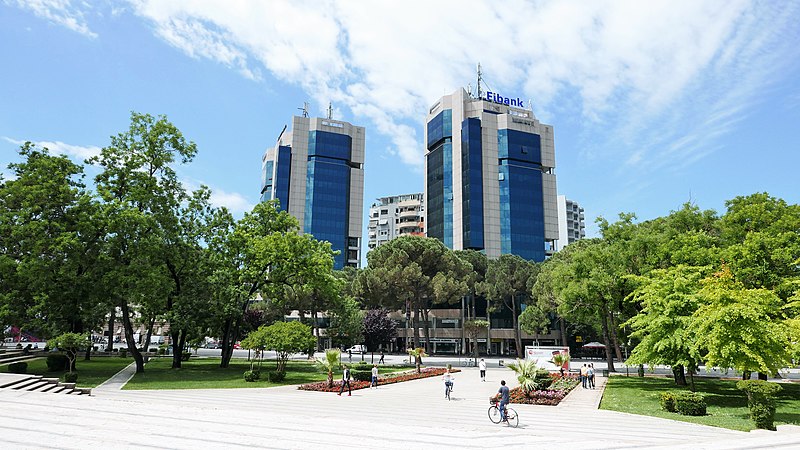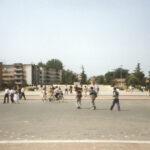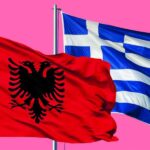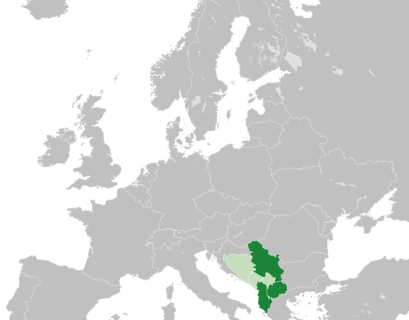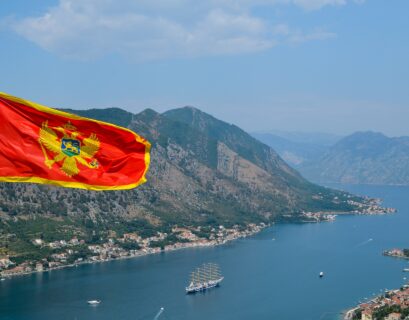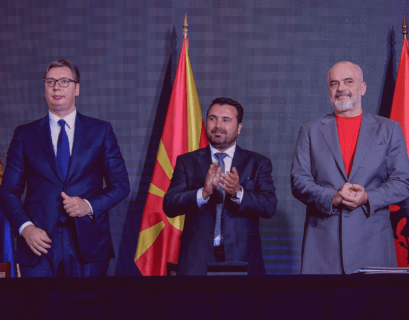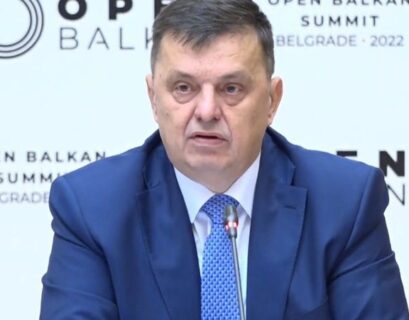By Prof. Asoc. Dr. Ilir Kalemaj
ABSTRACT
The role of international actors and factors has impacted in different levels the countries of Eastern Europe that emerged from the communist rule. Part of the reasons are different political cultures of CEE countries, different shapes of communist regimes that range from authoritarian Poland and post-totalitarian Hungary to totalitarian Albania, as well as different transition trajectories in post-communist period. The relative independence of institutions, guarantees of rule of law and other checks in the system also tell us a lot about the shape of democracies in these countries and if they have consolidated. Another important dimension is the economic reforms and how successful they have been to help make the full transition toward a consolidated market economy, able to thrive and resist global and EU market pressures. While there is a considerable body of literature and much scholarship written in the role and impact of internationals in transition processes of post-communist Eastern Europe, the impact of international actors and factors in economic development has often been overlooked and received scarce attention and even more so if we consider a critical perspective on the issue. This is the gap that specifically this paper addresses by focusing at Albania as an archetypical case that can help us better understand the shifts in the post-communist development models.
Keywords: Internationals, economic aid, development, Albania
INTRODUCTION
Albania’s economic development has followed an unusual path, albeit as the rest of the transition process in political, institutional, cultural and social axes. It has had lots of speed bumps, as well as outright halts or even deep recessions, such as the one that followed the crash of the pyramidal (Ponzi) schemes in 1997. Being a candidate country for the EU integration from 2014 and waiting to open the negotiations as we speak, Albania must comply inter alia with the second Copenhagen criteria that emphasizes the ability of a country’s economy to withstand external market pressures and competition from EU countries and be able to function to its full capacity. It is safe to conclude for the present that Albania is far from achieving this goal as its present economic shortcomings can testify.
Some of the most visible scars of Albania’s economy that will be discussed further in this paper are the disheartening ratio of exports versus imports which affect the trade deficit and indirectly deepen the budget deficit as well. In return this increases the weight of debt as percentage of GDP which is way above the 60 percent limit set by EU rules and regulations. The foreign direct investments are also far from desirable levels and a full 75 percent in the last decade came chiefly from only two single sources: TAP and Devoll’s Hydropower construction project of Statoil, which already approached investment maturity and recently have affected less and less the economic growth in the coming years. Skavica Hydropower is another American-backed project that supposedly will inject money and capital in the near future but without knowing exactly when it will start and how much impact it will have.
Also, Albania seems to be lacking an adequate legal system, for example a system of property rights, as well as enforceability of laws and contracts, while it still has a sufficiently underdeveloped financial sector. As for the role played by the international organizations operating in Albania, generally speaking is much limited when it comes to the economic sphere. Much more influential are the embassies of different states, which serve as economic agents in behalf of direct investors from their respective countries and try to act as intermediaries when conflicts, litigations, complains or other problems arise from different investors. They also gather and share valuable intelligence that can serve their investors well. Another important player into the mix and complementary to the role played by embassies, are the different bilateral Chambers of Commerce with the most vocal being American Chamber of Commerce, DIHA (German Chamber of Trade and Industry) etc. The Delegation of the European Union follows next due to the requirements of acqui communitaire that is conditional upon Albania’s advances to the EU and its transplantation to the domestic corpus legali, not to mention the different aid programs that started with PHARE in the beginning of 1990s and continue to this day with IPAs, INTERREG etc. Seen from this light, the Delegation of the EU in Albania is not only an influent political agent but also a valuable economic actor when it comes to impacting Albania’s economy and finances as well as exerting enough political pressure to the Albanian governments so that they should carry on with the proper economic reforms that guarantee free market and sustainable development.
On the other hand, also multinational corporations are very active on behalf of their interest and bring know how, technology, employment and innovation that are badly needed in a country which suffered the most terrible isolation due to its totalitarian and autarchic past. Last but not least, the international organizations at large play a rather limited role in economic transformation of the country and chiefly through various grants. Naturally, the notable exceptions here are the usual suspects: World Bank and IMF, the European Bank of Development and Reconstruction etc., which by their raison d’étre, have to be deeply involved in fostering economic development in countries they have their missions. Whereas, the other international organizations play an even more limited role than powerful INGOs that have been present and operating in Albania from the start of democratic processes. Amidst the most active ones of these INGOs that have projects that directly or indirectly connect to economic and social transformation are UNDP, IOM or World Vision, as well as national ones, such as USAID, SIDA, Terre de Hommes or transnational ones such as Soros Organizations, all of which fund direct project that have either direct or indirect impact in the national economy.
LITERATURE REVIEW
Economic growth in post-communism
From 2002 to 2012, also due to the slowdown and worldwide recession that started in 2008, the world economic growth averaged that of 3.2 percent. The economic crises culminated with the near bankruptcy of neighboring Greece which indirectly affected Albania as well due to both fall of exports and fall of remittances. All in all, in these 10-year period the average growth of Albania was nonetheless pretty steady, averaging a 4.5 percent. Whereas after 2008, the average growth has been only 3.2 percent. This growth has been a little better than the average Western Balkans growth in the same timeframe which averaged around 3 percent.
Albania’s economy had reached its overall peak in 1999, culminating with a 13.5 percent annual growth. Also, in 2001 the growth has reached a respectable level of 7.9 percent. Overall, the economic growth for the past three decades has been a meagre 2.5 percent mostly due to rapid recession in 1991, as well as annus horribilis of 1997. In 2000s, the biggest economic growth has been witnesses in 2008 with 7.5 percent economic growth, which was more than halved the following year with a meagre 3.3 percent and the main reason was the “Nation’s Highway” which started in 2007 and was inaugurated in 2009 but whose main effect in GDP due to public expenditures were in 2008. This under-the-potential economic growth, short of at least 3 percent is the chief responsible factor and the independent variable that has mostly affected the current standing of Albania when measured to the EU standards where the country has been a candidate member from June 2014. To this date, Albanians have revenues per capita that fell short to one third of the average EU citizen, thus making the country one of the poorest prospects even when measured by the regional standards. Unfortunately, in the recent years the gap between Albania and the EU has widened rather than close.
In the most recent years, we may mention the impact that Albania’s economy felt in the immediate years after the 2008 world financial crises, mostly affected by the close proximity to Greece and Italy, two of the European Union countries, most affected by this tumultuous event in global economy. For a few years Albania has had a steady economic growth but then the serious of earthquakes in November 2019 and particularly the global pandemic of the Covid’ 19 for the majority of 2020 and continuing have left their serious marks on the sluggish Albanian economy which shrank around 7.5 percent during the 2020. Albania is projected to grow by an average of 5.5 percent for the 2021. A problem that remains though is the very high level of the public debt which has already surpassed the ceiling of 80 percent as measured to GDP according to Bank of Albania. Overall, in the post-communist period, we may safely assume that Albania has made significant progress in the last decades and this has helped the country achieve a sustainable and overarching growth as the World Bank also states. It writes in its report inter alia that: “A rapid
pace of growth helped Albania narrow the per-capita income gap with the rest of Europe from 18% of average European Union (EU) incomes in 1998 to 30% in 2012. With rising incomes, poverty halved in the country from 25.2% in 2002 to 12.5% in 2008.” The fact that still we are as far the average of the European Union as Albania was in the distant year of 1912 where the country declared its sovereignty is however as cause for deep reflection not only on the pace of internal reforms but also to take the opportunity to have a more nuanced if not outright critical view on the foreign aid as well as foreign direct investments which account for half of Albania’s gross domestic product.
RESEARCH METHODS
Some authors have rightly pointed out the limits of single case research design[3] but nonetheless single case-studies have their merits in shedding light into processes and instruments that are often overlooked in large-N studies. Taking Albania as an archetypical case that helps us understand much of what the role of internationals in CEE countries has been in relation to helping or impeding the economic growth of a developing country, it helps create a better idea of the shape and effects of the economic aid. It also places higher scrutiny on the support of various international organizations in the other former communist countries, whose trajectories have varied to a considerable degree.
Factors that have inhibited steady economic growth
Albania’s economic growth has been generally characterized by periods of volatility that have been usually the effect of domestic political instability or foreign pressures that have resulted from international financial crises, economic slowdown or lack of interest from investors. Sometimes it has been a rapid economic growth due to real or fictional circumstances. A case that testifies for the second is the example of 1996 in the height of Ponzi schemes when most of the growth was only on paper.
Additionally, Albania’s economy has been characterized by fits and starts due to electoral cycles that conditions economic growth in electoral years, which run every two years. In these years and considering that electoral campaigns start at least six months in advance, in the first part of the year we usually witness rapid economic growth, fueled by the raising state expenditures in economy, while the second part of the year economy contracts due to arrears in payments from state budget and other related factors. This is ipso facto no healthy for the economy at large in the long run and one of primary reasons of fits and starts experimental model of free market transitioning in the Albanian case.
Also, other factors that have been crucial for a stable economic growth in the past, such as the remittances, have in recent years been in a steady decline without sign of recovery. A bit of help in that regard has paradoxically been the Greek crises when temporally a lot of the Albanian families decided to come back in their native land and bring along their savings and investments due to shortages in the Greek labor market, but alas that was short-lived and without prospect of repeating itself.
Generally speaking, Albania’s economy has lacked an economic growth vision and cohesive strategy, as well as clear objectives that go with it. This continues to present day when on one hand Albania foresees a growth based chiefly on agriculture and tourism and on the other hand major construction projects, including some in natural parks or other protective zones threaten the whole ecosystem and together with it, the tourism and agri-business. Notable cases are the projects in Vjosa river, which is protected by international conventions or the beautiful Valbona river in Tropoja in northwestern part of the country, where project of hydrocentrals are currently developing. The same can be said for agriculture, which despite rhetoric, is a priority in letter only but not in reality. It produces more than 20 percent of Albania’s GDP but it gets only 2 percent in terms of financing while Albania still is a net importer of most agricultural goods. The fragmentation of agricultural land with just a bit more than 1 acre per family whereas in the European Union the average is a full 16 acres per farm inhibits fast growth in this vital sector. Albania also lacks investments in human resources and technology and innovation, often being the dead last in these areas, not only as compared to the EU standards but also to regional ones.
The role of internationals in economic growth
As stated in the introduction of this paper, the role of the international actors and factors in stimulating economic growth in Albania has been diverse and complex one. On one hand, we see a rather limited role played by the main international organizations that have their branches in Albania, due to their nature of engagement and most of the impact here is indirect. As examples of these, we may mention OSCE/ODIHR, CoE, NATO etc. Whereas others have a much more impacted presence due to the nature of their institutions and raison d’être, such as World Bank and IMF, the European Bank of Reconstruction and Development etc. These institutions use several tools and means of leverage to induce certain reforms of public sector like the Structural Adjustment Policies of IMF or other straitjackets that the Albanian politicians have to live with, often by undertaking necessary but unpopular tax hikes and cuts in public expenditures. These are often recommended as way to achieve fiscal consolidation, get deficit down, low the debt level or all of the above. Governments, like the one in Albania, have to comply, in order to be eligible for soft loans or grants like the ones secured by World Bank or EBRD.
On the other hand, and looking from a critical point of view, often the policies recommended fall under the suspected structural adjustment policies that particularly IMF and World Bank adopt and are often criticizes of being national sovereignty and growth strategies by adopting neo-colonialist approaches or by particularly advocating austerity mechanisms as the sole panacea of the economic wounds. Of interest and not to be overlooked is a somewhat middle ground played by the Delegation of the European Union in Albania. Its role it somehow falls into a grey area category, while it plays a sui generis role, being an idiosyncratic actor and representing a sui generis supranational institution where Albania seeks to join after first opening negotiation chapters, hopefully by this summer of 2018. It has more leverage that all international organizations combined, due to its “sticks and carrots” incentives, which on the other hand plays a conditionality role for democratization as an author has argued some time ago.
Coming back from a very isolationist regime and a centralized planned economy, Albania nonetheless has made huge efforts to overcome its initial autarchic model and make a fast embrace of the market economy. In this process, it has been led through strong guidelines from international organizations, especially the ones that have a more economic orientation like the ones underlined above. Time after time, it has considered pursuing independent paths, like when various governments have tried to ignore IMF advices, but it has also backtracked when consequent governments have seen the role and necessity to have such organizations backing up the economic plans and Albania’s general and sustainable growth. This is not only for the sustainability of the model but also it serves well the ruling political elites surviving instincts, because if the economy is in arrears or growth staggers, then political capital can quickly evaporate, as politicians know all too well.
That nevertheless does neither excuse the difficult political choice of Albania’s ruling elites, nor it does justify the often-chaotic policies and changing paradigms of foreign aid, its conditionality on rule of law and democracy, the lack of significant bottom-up support of civil society actors and other structural absences that can be critically reflected upon the foreign aid, economic incentive packages, loans and other forms of donations or borrowing from international agencies. The same goes without saying for economic aid and financial impact in bilateral relations of Albania. The government has been by far the biggest single benefiter but without much impact when it comes to the results and sustainability of the economic growth.
CONCLUSIONS
In slightly more than a century, which corresponds to Albania’s longeitivity as a state, the country has gone from feudalism to totalitarianism to anarchy in a tweak of an eye as I have argued elsewhere. Whereas, Albania’s economy in the post-communist period has witnessed both rapid developments as its peaks in 1996, 1999 and 2001 testify, as well as quick downturns and deep recessions like the one in 1997 that followed the collapse of Ponzi schemes. The transformation from centralized, planned economy toward a free market economy in the first years of democratic transition was accompanied with fast privatizations and general deregulations that coupled with massive emigration and the flow of remittances back home, fastened the economic growth and country’s prosperity after the autarchy of the totalitarian regime. However, short-term planning, fits and starts of the economy that in terms of government investments and expenditures evolved around the electoral cycle, not a sustainable policy for attraction of foreign direct investments and more importantly not a coherent strategy of development, left Albania’s economy still in shackles and far from being able to withstand the market pressures of the EU as the second Copenhagen criteria stipulates. This in turn is in tandem with a ferocious political antagonism and signs of an oligarchy-controlled market which coupled with a weak judiciary and lack of enforcement of contracts, makes both foreign and domestic business highly vulnerable. This last issue has often been the main preoccupation and headache that has been addressed repeatedly by business chambers, especially those representing foreign entrepreneurship in Albania as a key factor that prevents further attraction of FDI-s. The frequent changes in fiscal legislation not only do not help in this regard, but often make things worse. The foreign chambers of commerce, most notably the American Chamber, The British-Albanian Chamber and DIHA (the German one), have been vocal both in policy advising, exerting lobbying power and protesting wherever relevant to defend the interests of business associations. An example of this are the annual polls that DIHA makes with its members, including this year’s which expressed higher confidence of German businesses operating in Albania as compared with past years but still underlining that tax hikes and tax offices bureaucracies remain the main problem that has actually worsen as well as the declining performance of the public administration, which taken together continue to be main hurdles.
They are the notable exceptions, together with the most important international organizations in the field of economy and finance, IMF and World Bank, or EBRD. These last institutions have been very active through their Structural and Adjustment Policies (SAPs), which as mentioned above tend to put a straitjacket to consecutive Albanian governments and enhance fiscal discipline before allowing the country to be eligible for soft loans or potential grants in particular areas, whereas the other international organizations have not been terribly effective in influencing Albania’s government on a particular path. But also, these SAPs have not been particularly visionary or effective in their approach and have often been used conveniently by the Albanian politicians in power as an alibi to show their hands are tight in front of their voters or critics. Also, little sustainability is provided to civil society actors and factors that could be more useful in the long run. On the other hand, most of the donations from responsible foreign organizations and donors such as USAID, UNDP and others have seen little or no conditionality at all attached to them. The notable exception here is the European Union through its presence in Albania or its main offices in Brussels that through their IPA-s (or previous instruments such as PHARE), have been able to address certain public policies effectively but neither can European Union be considered an international organization, nor is Albania yet in the phase of the opening of negotiations for the 35 waiting chapters, which will provide the necessary “sticks and carrots” incentives for Albania counterparts to perform on the specific areas through adoption of acqui communitaire, as well as its successful implementation.
REFERENCES
Banka e Shqipërisë është optimiste për rimëkëmbjen e ekonomisë në vitin 2021. Revista Monitor. See: https://www.monitor.al/banka-e-shqiperise-eshte-optimiste-per-rimekembjen-e-ekonomise-ne-vitin-2021-2/ 16 January 2021.
Economic Accession Criteria. (2018). Downloaded from: https://ec.europa.eu/info/business-economy-euro/economic-and-fiscal-policy-coordination/international-economic-relations/enlargement-and-neighbouring-countries/enlargement/economic-accession-criteria_en
Retrieved 26/04.2019
Elbasani, Arolda “Albania in transition: manipulation or appropriation of international norms?” Journal of Southern Europe and the Balkans 10 (3), 293-307, 2008.
Gjokutaj, Eduard. Rritja Ekonomike në Shqipëri: Faktorët ndikues, dje, sot dhe nesër. http://www.monitor.al/rritja-ekonomike-ne-shqiperi-faktoret-ndikues-dje-sot-dhe-neser/ 2014. Retrieved 27.04.2019.
McGregor, Sue. “Structural adjustment programmes and human well-being”. https://scholarsportal.info/ 25 May 2003.
Sondazhi/ Bizneset gjermane të kënaqur: Situata në Shqipëri ka ndryshuar. (2018). Downloaded from: http://www.gazetatema.net/2018/05/07/sondazhi-bizneset-gjermane-te-kenaqur-situata-ne-shqiperi-ka-ndryshuar/ Retrieved 07/05/2019
Kalemaj, Ilir. “Sustainable Development Models and Reform Cycle in Eastern Europe.” European Journal of Economic Sciences. Vol. 1, No. 1. Grias Publishing Project, 2015.
Kaiser, Jurgen “Interfering in national sovereignty”. D+C, development and cooperation. 3 August 2018.
King, Nigel. The qualitative research interviews. In C. Cassell & G. Symon (Eds.), Qualitative methods in organizational research: A practical guide (p. 14–36). Sage Publications, Inc. 1994.
Rapoza, Kenneth. “Albania Becomes Latest China Magnet”. Forbes. Retrieved 10 February 2021. Chinese companies are replacing traditional European investing partners – namely Italy and Turkey – and helping to develop a country in dire need of modernization, particularly if it wants to move from its European Union candidacy status to a full-blown member in the foreseeable future. June 13, 2015.
World Bank. “Pillars of Growth in Albania: A Photo Essay”. http://www.worldbank.org/sq/news/feature/2015/05/21/pillars-of-growth-albania


